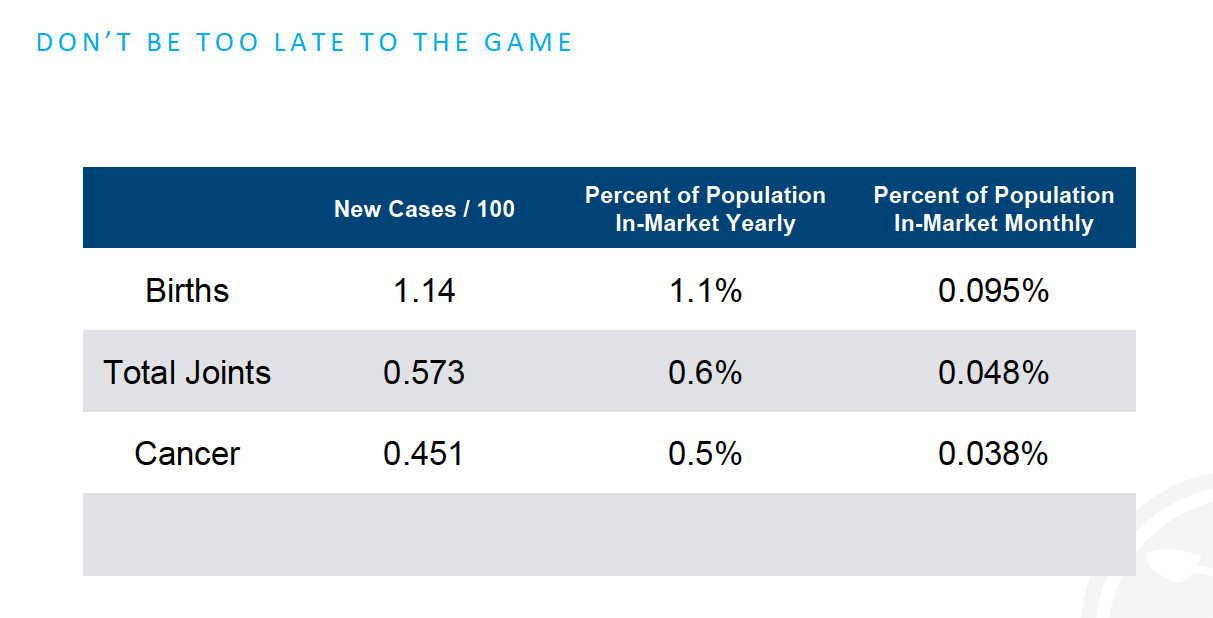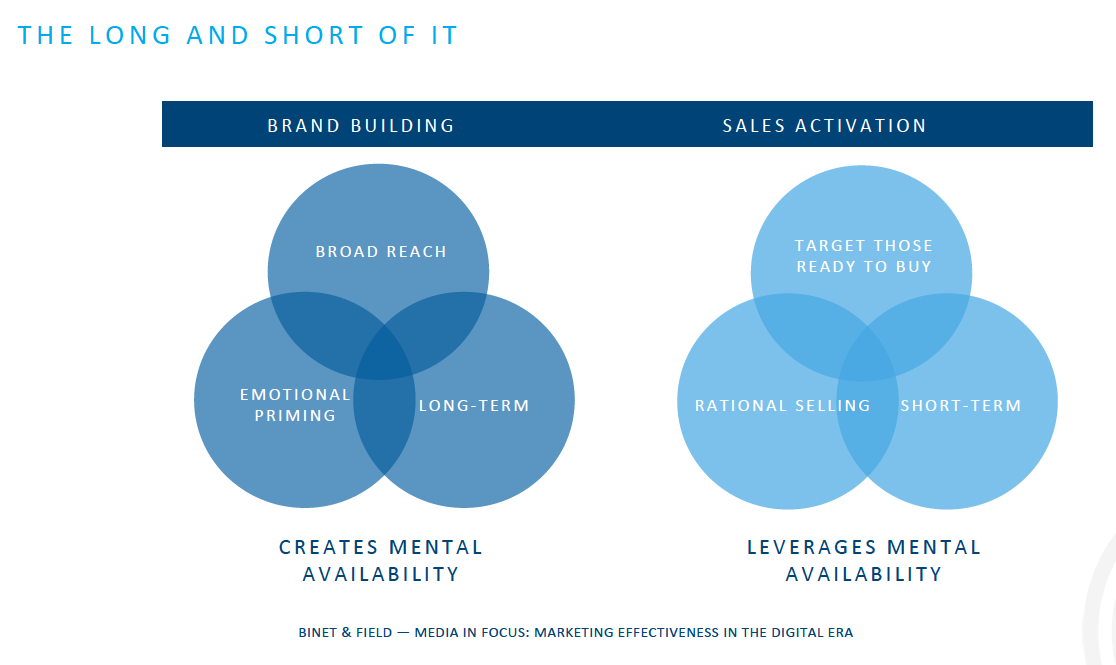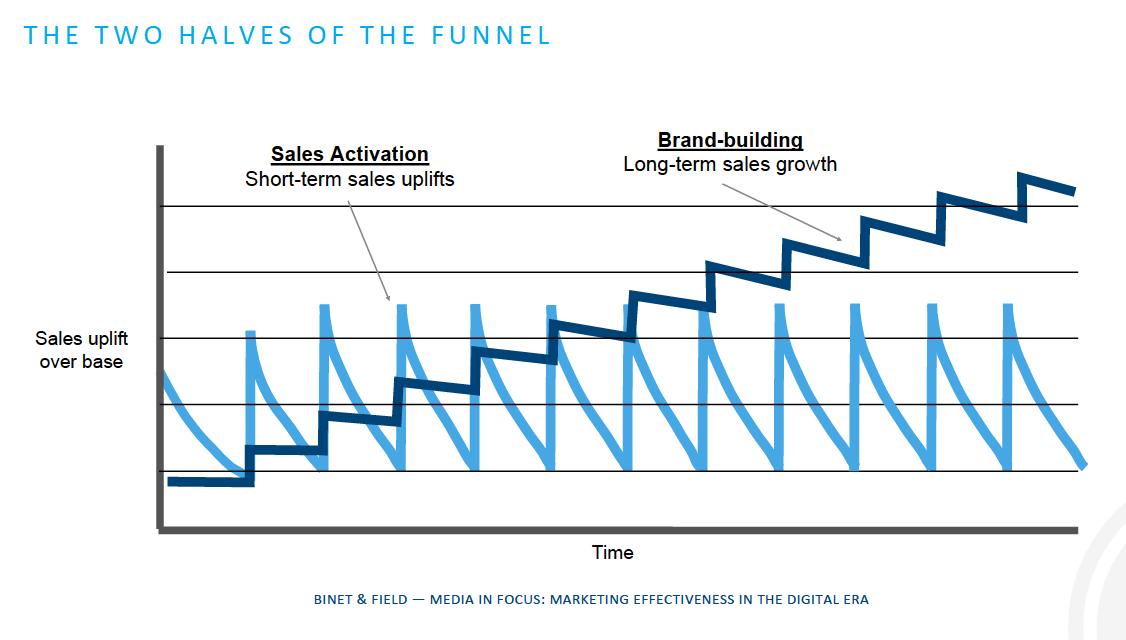Should You Spend Your Media Budget on Branding or Acquisition?
MultiCare’s CEO believes brand-building is the key to sustainable growth, and that it supports acquisition. It’s not either-or; it’s both-and.
// By Jane Weber Brubaker //
 Health care marketers are sometimes on the defensive when proposing budgets to their CEOs and CFOs, feeling the pressure to justify the expense and project the expected return on investment — especially for “softer” initiatives like brand building.
Health care marketers are sometimes on the defensive when proposing budgets to their CEOs and CFOs, feeling the pressure to justify the expense and project the expected return on investment — especially for “softer” initiatives like brand building.

William G. “Bill” Robertson, CEO of MultiCare
So, it was refreshing to hear a different perspective from Bill Robertson, CEO of MultiCare, a 12-hospital health system in the Pacific Northwest. “Why spend the money if we’re not going to grow as an organization?” he said during a session at HMPS in Austin, Texas in April. “It didn’t make sense, the idea of building awareness. It didn’t seem to be about growth — at first.”
Robertson’s change of heart came about through wide-ranging monthly conversations with his friend and co-presenter Jerry Hobbs, president and chief strategy officer at Prairie Dog, a health care marketing agency. “Jerry brought up a couple of books that he thought I should know about,” Robertson says.

Jerry Hobbs, president and chief strategy officer at Prairie Dog
The two books were How Brands Grow: What Marketers Don’t Know by Byron Sharp, and The Long and the Short of it: Balancing Short- and Long-Term Marketing Strategies by Les Binet and Peter Field.
Hobbs says, “What these books do for us is they represent a new way of looking at growth and a new way of looking at marketing effectiveness.”
The title of their session, “The Long & Short of It: Brand-Building vs. Acquisition,” implies that there’s a binary choice — either one or the other. Robertson contends that doing “both-and” is the winning formula.
Key Metric: Market Penetration
“Sharp’s research tells us that growth is all about market penetration,” explains Hobbs. “And we define that as the number of people who buy your brand at least once in a given period of time.”
He stresses that adding to the number of people who buy your brand at least once should be the primary focus, not market share, retention, or repeat buyers.
Investopedia illustrates market penetration with this example: “If there are 300 million people in a country and 65 million of them own cell phones, the market penetration of cell phones would be approximately 22%. In theory, there are still 235 million more potential customers for cell phones, or 78% of the population remains untapped. The penetration numbers might indicate the potential for growth for cell phone makers.”
Coca-Cola has the highest market penetration in the world. Hobbs points out that half of Coke’s sales come from infrequent buyers. “So, if Coca Cola only decided to focus on heavy buyers or those buyers with a high propensity to buy their product, they’d be missing out on half their sales,” he says. “So, they know that they have to continuously reach all potential buyers in order to grow their brand.”
Robertson notes, “Focusing your advertising efforts on heavy buyers or increasing and retaining current buyers will have little effect on growth. Focusing on the people who are always going to buy you anyway doesn’t help you grow. You have to focus on all the rest — those who are not necessarily seeing you as an alternative.”
Why People Choose Brands (Hint: It’s Not Brand Love)
Hobbs challenges the notion of “brand love” as the driver of consumer choice. “There’s very little brand loyalty or brand love as we tend to think of it,” he says. He contends that we choose based on familiarity and convenience, or stick with brands because of high switching costs, contracts, and subscriptions. Taking it down to the most pragmatic level, he says the purpose of a brand is to make your company or product easy to know and understand and make it easy to find. “And you do that by building and sustaining memory in the consumer mind,” he says.
An Always-On Approach
Hobbs says brands help us make fast decisions. “We tend to create memory structures, and you might call them shortcuts. All a brand is, is a shortcut,” he says.
To become part of that memory structure, Hobbs recommends an always-on approach to media buying, with an emphasis on reach even at the expense of frequency. “You should not be flighting your brand media,” he says. If you’re out of the market for periods of time, consumer memory of your brand decays.
Robertson notes, “We don’t know when someone’s going to want to buy, but we want to be there, and we want them to choose us when they do want to buy. If you wait until the buyer goes to market, it’s already too late.”
He points out that at any given time, there’s a finite number of people who need care, using births, total joints, and cancer as examples in the chart below.

“What we’re trying to accomplish when we look at focusing on the always-on is when someone ultimately has to think about cancer or needing a total hip or they want to think about having a baby that we’re what first comes to mind,” Robertson says.
Brand-Building and Sales Activation: Better Together
Binet and Field, authors of The Long and the Short of It, are considered by many to be the world’s foremost experts on advertising effectiveness.
“Their work identifies two primary components of advertising, the brand-build and sales activation,” says Hobbs. “Brand-building is about creating mental availability.” He says brand-building is like growing a tree and sales activation is like picking the fruit.

The authors, with decades of data to back up their conclusions, note that advertising effectiveness is declining. “It’s failing in terms of driving growth, share, and profit,” says Robertson. “Brand awareness is also declining.”
He sees the culprit as what he calls short-termism and admits that there’s industry-wide pressure to seek short-term measurable results. But brand-building, he says, is actually the main driver of growth. “Brand-building has a much larger long-term impact on growth than activation. It creates, I believe, a sustainable, competitive advantage over time.” Hobbs adds, “The brand-build actually lifts sales activation.”

Binet and Field recommend a 60/40 split between media spend for brand-building and sales activation, respectively, but in health care, a high consideration choice for consumers, the proportion should be closer to 70/30. “The brand builds that trust by being bigger and safer,” Hobbs says.
Robertson sees this approach as a new paradigm. “It’s a big journey for us inside my own health system,” he says. “This is a both-and approach. Building [market] penetration is the key, and it takes both the brand-build and sales activation to deliver the results.”
Jane Weber Brubaker is executive editor of Plain-English Health Care, a division of Plain-English Media. She directs editorial content for eHealthcare Strategy & Trends and Strategic Health Care Marketing, and is past chair of the eHealthcare Leadership Awards. Email her at jane@plainenglishmedia.com.
